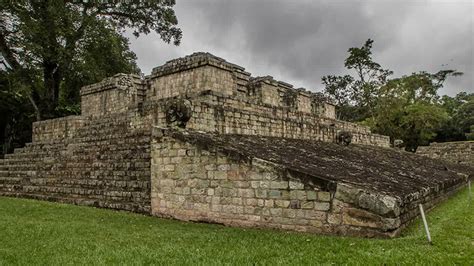Discover the history of Luxembourg from its formation to its role in the World Wars. Explore the House of Luxembourg and Habsburg rule.
Formation of Luxembourg
Contents
The formation of Luxembourg dates back to the early Middle Ages when the area was a prosperous and strategic location for trade and commerce. The region was inhabited by the Celts and then later occupied by the Romans, who established a fortification in the area. After the fall of the Roman Empire, the region was divided and ruled by various Frankish and Carolingian rulers.
In the 10th century, Count Sigfried of the Ardennes obtained the area and built a fortress on the site of what is now the city of Luxembourg. This marked the beginning of the establishment of the County of Luxembourg, which would eventually evolve into the modern-day Grand Duchy of Luxembourg.
Throughout the medieval period, the County of Luxembourg was a wealthy and influential territory, at times under the rule of the House of Luxembourg, which produced several Holy Roman Emperors. The county’s strategic location made it a target for various European powers, and it experienced periods of conflict and upheaval.
By the 15th century, the Duke of Burgundy, Philip the Good, gained control of the county, bringing it under Burgundian rule. Subsequently, the region was passed into the hands of the Habsburgs, as part of the larger Habsburg Empire.
The formation and early history of Luxembourg laid the groundwork for its later development as a key player in European politics and as a prosperous center of trade and commerce.
Medieval period and the House of Luxembourg
The medieval period in the history of Luxembourg was marked by the rise of the House of Luxembourg as a prominent European dynasty. During this time, the territory of Luxembourg expanded and gained importance in the region. The House of Luxembourg originated from the castle of Luxembourg and grew in power and influence through strategic marriages and military conquests.
Under the reign of Henry VII, the House of Luxembourg emerged as a major player in European politics. Henry VII was crowned as the Holy Roman Emperor, solidifying the dynasty’s position as one of the leading noble houses in Europe. During this period, the Luxembourgian rulers were also actively involved in the Crusades and the Teutonic Knights.
The House of Luxembourg continued to expand their territories, acquiring lands and titles across Europe. They established strong connections with other noble houses and became influential figures in the Holy Roman Empire. The Luxembourgian rulers played a significant role in shaping the political landscape of medieval Europe.
Overall, the medieval period and the rule of the House of Luxembourg marked a time of growth and prominence for the Luxembourgian territory. The dynasty’s influence extended across Europe, leaving a lasting impact on the region’s history and politics.
Burgundian and Habsburg rule
During the period of Burgundian and Habsburg rule in Luxembourg, the country experienced significant changes in its political and social structure. This era marked the consolidation of power by the influential Burgundian dukes, who extended their authority over Luxembourg through strategic alliances and military campaigns. The marriage of Mary of Burgundy to Emperor Maximilian I of the Habsburg dynasty led to Luxembourg becoming part of the Habsburg Empire, bringing about a period of Habsburg rule that lasted for several centuries.
Under Burgundian and Habsburg rule, Luxembourg became an important center for trade and commerce, particularly in the production of iron and steel. The Habsburgs invested in the development of mining and metallurgy, which further strengthened the economy of the region. The presence of Habsburg influence also contributed to the architectural and cultural development of Luxembourg, as the construction of fortifications and palaces became prominent features of the landscape.
However, the Burgundian and Habsburg rule also brought about periods of conflict and instability, as the dukes and emperors sought to expand their territories and assert their authority over Luxembourg. This often resulted in clashes with neighboring powers and internal revolts, shaping the political landscape of the region and impacting the lives of its people.
Despite the challenges posed by Burgundian and Habsburg rule, Luxembourg’s position as a strategic stronghold and trading hub continued to grow, establishing the foundation for its future as a key player in European politics and economics. The legacy of this period is evident in the historical landmarks and cultural heritage that still define Luxembourg today, reflecting the enduring influence of Burgundian and Habsburg rule on the country’s development.
Luxembourg in the 19th century
The 19th century was a period of significant change and development for Luxembourg. The country went through various political and social transformations, shaping its modern identity. One of the most notable events of this period was the Belgian Revolution in 1830, which led to the separation of Belgium from the Netherlands. As a result, Luxembourg became a separate, independent state under the terms of the London Conference in 1839.
During the 19th century, Luxembourg also experienced significant industrialization and economic growth. The development of the steel industry and the expansion of the railway network had a profound impact on the country’s economy, leading to the emergence of a new prosperous middle class.
Furthermore, the Luxembourg Crisis of 1867, caused by King William III of the Netherlands‘ refusal to recognize the Luxembourg constitution, resulted in a diplomatic intervention by the Great Powers and the signing of the London Treaty, reaffirming Luxembourg‘s independence and its permanent neutrality.
Moreover, during this period, Luxembourg underwent significant cultural and artistic development, with the construction of new architectural landmarks such as the Adolphe Bridge and the Grand Ducal Palace, as well as the flourishing of literature and music.
In conclusion, the 19th century was a pivotal period in the history of Luxembourg, marked by political autonomy, economic growth, diplomatic challenges, and cultural renaissance, all of which laid the groundwork for the country’s modern identity and prosperity.
Luxembourg in the World Wars
History of Luxembourg
During the First World War, Luxembourg was occupied by Germany in 1914, and remained under German control until the end of the war in 1918. Despite its neutrality, Luxembourg was not spared from the fighting, and the country experienced significant hardship during this time.
Luxembourg’s experience during the Second World War was even more devastating. The country was invaded by Nazi Germany in 1940, and during the occupation, Luxembourg suffered widespread destruction and loss of life. The Jewish population of Luxembourg was particularly targeted, with many being deported and killed in concentration camps.
After the war, Luxembourg played an important role in the formation of the European Union, as one of the founding members of the European Coal and Steel Community in 1951. The country has since become a strong advocate for peace and international cooperation, using its own history to promote a peaceful and united Europe.
Today, Luxembourg stands as a testament to the resilience and determination of its people, who have overcome the challenges of the World Wars to build a prosperous and peaceful nation.
| Key Events during the World Wars in Luxembourg |
|---|
| Luxembourg’s occupation during World War I |
| The devastation of Luxembourg during World War II |
| Luxembourg’s role in the formation of the European Union |











